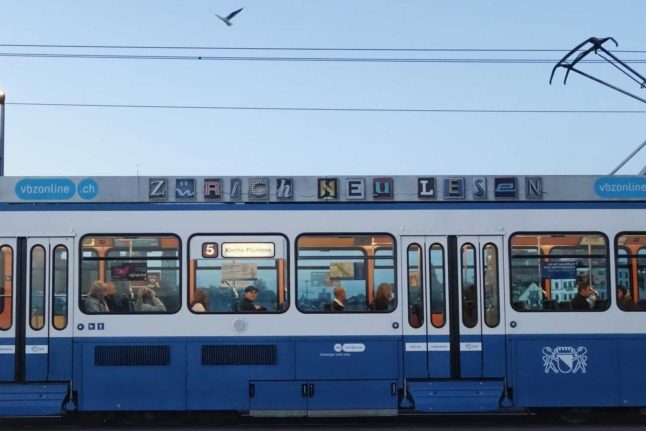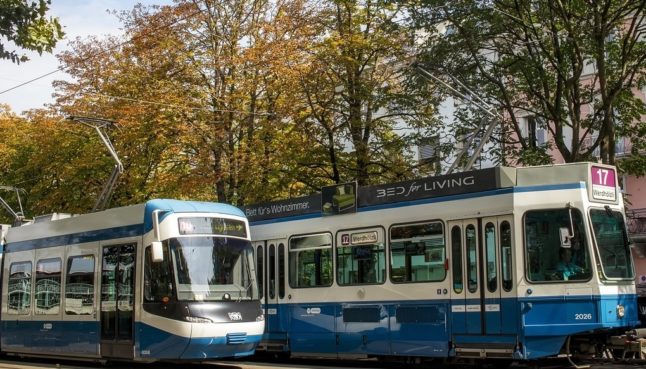In Switzerland, income tax is levied at a federal, cantonal and municipal level (with a few exceptions).
In some cases there is little difference in the amount of income tax you would pay in different municipal areas or communes. However in others the difference could be so significant that it acts as an incentive to move area – particularly for the uber-wealthy.
READ MORE: Which Swiss canton has the most millionaires?
Zurich, as Switzerland’s largest canton, has 162 municipalities. Some are urban, some suburban and some at least resemble rural Switzerland.
Please note that the following takes into account only the income tax levied at a municipal level.
As already reported by The Local this year Zurich canton will cut taxes for the first time in two decades – although this will only result in a cut of around CHF15 per year.
Have your say: What will you do with Zurich’s tax cut money?
First things first, what is municipal taxation?
In this case it refers to the income tax levied at a municipal (i.e. communal/local council) level.
This does not take into account other taxes that can be levied as a consequence of living in a particular municipality, like property taxes.
Municipal taxes are levied at the municipal level according to the applicable municipal tax quota (German: Gemeindesteuerfuss, French: coefficient de l’impôt communal), which in most cantons are expressed as a percentage of cantonal tax.
Reader question: Can I deduct working-from-home costs from my Swiss taxes?
This is why you might see your municipality as having a 115 percent tax rate (or sometimes expressed as a decimal 1.15).
Fortunately, this does not mean you need to pay 115 percent of your income to the municipality.
Instead, it means in that municipality, you need to pay 115 percent of the cantonal tax.
For instance, imagine the cantonal tax rate is 5 percent.
You earn CHF100,000 per year, then the cantonal tax will be CHF5,000 per year on the basis of your income.
Where the municipal tax is 115 percent, you will need to pay CHF5,750 in total (as this is 115 percent of CHF5,000).
This amount covers both your cantonal and municipal taxes (i.e. you do not need to pay CHF5,750 to the council and to the canton).
This percentage can often be lower than 100, for instance 85 percent (or 0.85).
In this case, you would need to pay CHF4,250.
Which Zurich municipalities have the highest income tax rate?
OK, now that we’ve got the number crunching out of the way, we can look at the comparative tax rates of different parts of Zurich.
These figures do not take into account church tax (which is a topic for another article).
The highest municipal income tax rate of all 162 municipalities in Zurich is in Maschwanden, where residents pay 130 percent of council tax.
ANALYSIS: Is Switzerland actually a tax haven?
This is followed by Wildberg (129%), Bachs (127%), Adlikon (126%) and Humlikon, Rifferswill, Schlatt and Winterthur (all 125%).
At the other end of the scale, the lowest rate is 72 percent in Kilchberg.
This is followed by Küsnacht (75%), Rüschlikon (75%), Winkel (76%) and Neerach (76%)
A full list of the tax rates of each of Zurich’s 162 municipalities can be found here.
How has this changed?
The tax rates changed over the past year at a municipal level.
By and large things stayed the same, with the majority keeping their tax rates the same as in 2021.
READ MORE: How wealthy foreigners can ‘buy’ a Swiss residence permit
There were however 27 municipalities which raised their taxes and 12 which decreased the tax burden for residents.
The biggest increase came in Weisslingen, which raised taxes by ten percent.
Oetwil an der Limmat and Bassersdorf both increased taxes by five percent.
Dietlikon, in the central part of the canton, was the only canton to increase taxes in both 2021 and 2022.
On the other side of the coin, the biggest decrease was in Stäfa (8%) and Stammheim (5%).



 Please whitelist us to continue reading.
Please whitelist us to continue reading.
Member comments